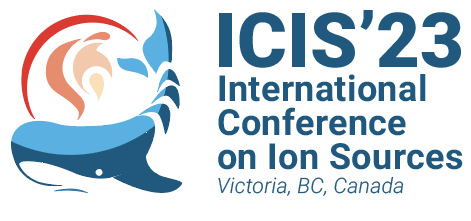Speaker
Description
The neutral beam injector for heating & current drive (HNB) for ITER requires the deuterium negative ion beam (D-) with 1 MeV, 40 A (200 A/m2) for 3600 s and hydrogen negative ion beam (H-) with 870 keV, 46 A (230 A/m2) for 1000 s. The required beam divergence angle is less than 7 mrad. Ensuring this beam divergence angle is essential to suppress excess power loads on the beamline, and consequently to realize high power and long pulse beam injection. To assure the design integrity of the ITER HNB accelerator, the beam emission spectroscopy (BES) was newly installed as contactless measurement of the beam during long pulse at MeV test facility (MTF: 1 MV, 0.5 A), which is a test facility to demonstrate the same intense hydrogen negative ion beams required for the ITER HNB. The accelerator in MTF is five stages MAMuG (Multi-aperture multi-grid) accelerator with the same acceleration gap of the ITER’s one with nine apertures to extract the beam. In the first test of the BES, change of the beam current measured electrically can be represented in this BES system even in the complicated beam profiles of the multi beamlets. The divergence angles were measured at the beam energy from 300 keV to 750 keV with the same perveance. The divergence dependence on the beam energy was successfully confirmed. It was also observed that there were some fluctuations of the beam emission light during the long pulse. The cause of it was examined with the ion source condition and the beam footprint measurement. Such effective beam monitoring system for the ITER HNB by using ITER-relevant intense and long pulse beams is reported.
| Email Address | tanaka.yasuyuki@qst.go.jp |
|---|---|
| I have read the Code of Conduct to attend ICIS2023. | Yes |

